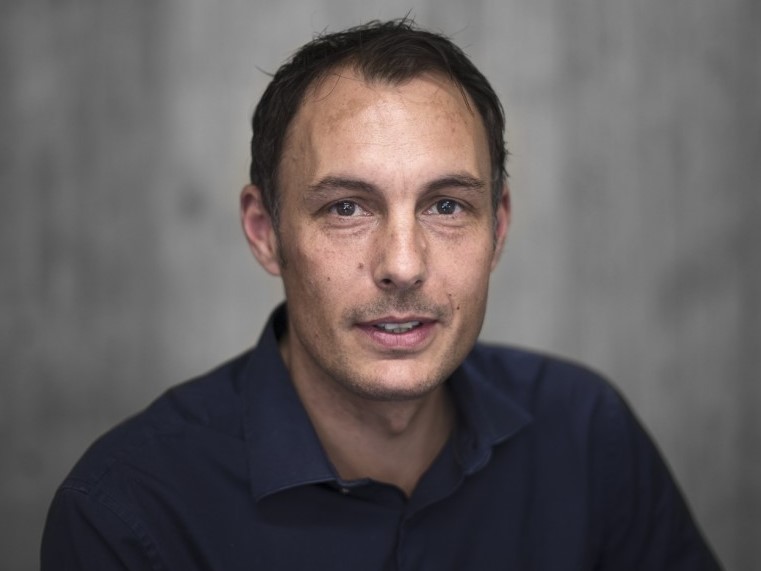What we investigate
Our laboratory studies the immunological processes during tissue regeneration and fibrosis in various tissues, including the skin. We put a particular focus on how low oxygen (hypoxia) shapes the phenotype of different immune cells in homeostasis and during tissue injury.
KEYWORDS
fibrosis, hypoxia, immunology, tissue regeneration, vascular remodeling

Our research in more detail
The infiltration of immune cells into hypoxic tissues and subsequent vascular remodeling are a prerequisite of wound healing but also central features of tissue fibrosis and tumor angiogenesis.
Indeed, organ fibrosis as well as tumor progression show pathological features that are reminiscent of a classical wound healing response, whereas tissue fibrosis that is considered as an aberrant and excessive wound healing response. Likewise, the tumor microenvironment is often referred to as the "never healing wound" and certain tumor types exhibit massive fibrosis. Therefore, our work is based on the hypothesis that wound healing, organ fibrosis and tumor progression share strong mechanistic links. The prominent features of these processes are infiltration of immune cells and subsequent remodeling of the vasculature in response to low oxygen.
Exposure of cells to low oxygen tensions leads to activation of Hypoxia-inducible factors (HIFs), a family of transcription factors, which mediate cellular adaptation to hypoxia. By using in vivo models with conditional knockouts in different immune cell subsets, we investigate the role of HIFs in distinct immune cell subsets and their impact on tissue regeneration and fibrosis after injury as well as on the progression of malignant tumors.
Selected publications
SKINTEGRITY.CH Principal Investigators are in bold:
- Sobecki M, Chen J, Krzywinska E, Nagarajan S, Fan Z, Nelius E, Monné Rodriguez JM, Seehusen F, Hussein A, Moschini G, Hajam EY, Kiran R, Gotthardt D, Debbache J, Badoual C, Sato T, Isagawa T, Takeda N, Tanchot C, Tartour E, Weber A, Werner S, Loffing J, Sommer L, Sexl V, Münz C, Feghali-Bostwick C, Pachera E, Distler O, Snedeker J, Jamora C and Stockmann C (2022). Vaccination-based immunotherapy to target profibrotic cells in liver and lung. Cell Stem Cell, 29(10), pp. 1459-1474.
- Sobecki M, Krzywinska E, Nagarajan S, Audigé A, Huỳnh K, Zacharjasz J, Debbache J, Kerdiles Y, Gotthardt D, Takeda N, Fandrey J, Sommer L, Sexl V and Stockmann C (2021). NK cells in hypoxic skin mediate a trade-off between wound healing and antibacterial defence. Nat Commun, 12(1), p. 4700.
- Krzywinska E, Kantari-Mimoun C, Kerdiles Y, Sobecki M, Isagawa T, Gotthardt D, Castells M, Haubold J, Millien C, Viel T, Tavitian B, Takeda N, Fandrey J, Vivier E, Sexl V and Stockmann C (2017). Loss of HIF-1α in Natural Killer cells inhibits tumour growth by stimulating non-productive angiogenesis. Nat Commun, 8(1), p. 1597.
- Kantari-Mimoun C, Castells M, Klose R, Meinecke AK, Lemberger UJ, Rautou PE, Pinot-Roussel H, Badoual C, Schrödter K, Österreicher CH, Fandrey J and Stockmann C (2015). Resolution of liver fibrosis requires myeloid cell-driven sinusoidal angiogenesis. Hepatology, 61(6), pp. 2042-2055.
- Stockmann C, Kirmse S, Helfrich I, Weidemann A, Takeda N, Doedens A and Johnson RS (2010). A wound size-dependent effect of myeloid cell-derived vascular endothelial growth factor on wound healing. J Invest Dermatol, 131(3), pp. 797-801.
